Initiative Does
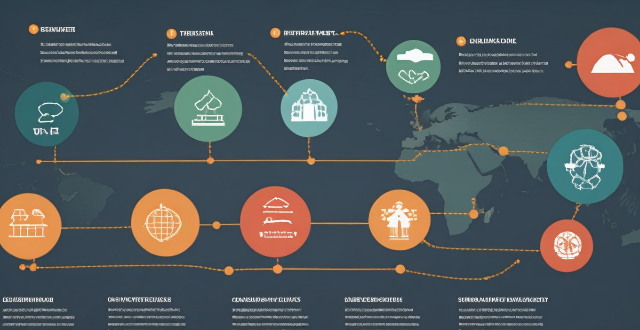
How does TCFD align with other global reporting initiatives like the Global Reporting Initiative (GRI) ?
The Task Force on Climate-related Financial Disclosures (TCFD) and the Global Reporting Initiative (GRI) are two global sustainability reporting frameworks that share several key points of alignment. Both provide guidelines for companies to report on their sustainability performance, with TCFD focusing specifically on climate-related financial disclosures and GRI covering a broader range of sustainability issues. They also emphasize the importance of materiality assessment, stakeholder engagement, risk management, and climate change disclosures in determining which aspects are most relevant to an organization's business model and strategy. By following both frameworks, companies can provide a more comprehensive picture of their sustainability performance and demonstrate their commitment to addressing climate change and other sustainability issues.

What are some examples of successful citizen-led climate initiatives ?
Successful citizen-led climate initiatives play a crucial role in addressing the global climate crisis. These initiatives are often driven by grassroots movements, community organizations, and individuals who are committed to taking action against climate change. Examples of successful citizen-led climate initiatives include renewable energy cooperatives, community gardens and urban farming projects, bike share programs, climate education and advocacy efforts, and waste reduction and recycling programs. These initiatives highlight the importance of collective action and individual responsibility in creating a more sustainable future for all.
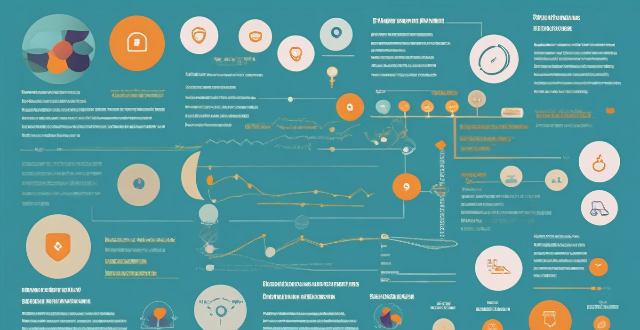
How does TCFD differ from other sustainability reporting frameworks ?
The Task Force on Climate-related Financial Disclosures (TCFD) is a unique sustainability reporting framework that focuses specifically on the financial risks and opportunities associated with climate change. It differs from other frameworks such as the Global Reporting Initiative (GRI) and the Sustainability Accounting Standards Board (SASB) in several key ways, including its exclusive focus on climate change, emphasis on financial implications, stakeholder engagement, specific recommendations for reporting, and integration with financial reporting. TCFD's approach helps companies effectively communicate their climate-related financial risks and opportunities, making it a valuable tool for navigating the complexities of climate change and its potential impact on their bottom line.
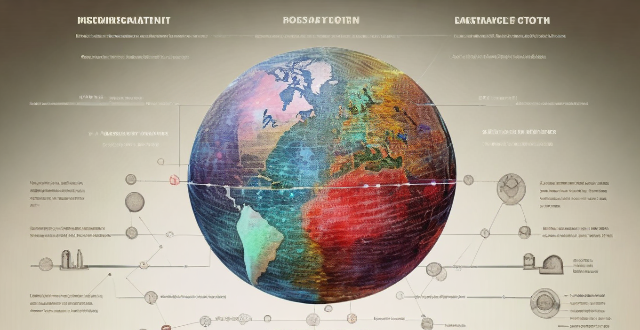
What are some successful examples of youth-led climate action initiatives ?
This article discusses successful youth-led climate action initiatives around the globe, highlighting examples like Fridays for Future, US Youth Climate Strike, and Earth Uprising. These movements have achieved significant milestones in raising awareness, inspiring policy changes, and fostering collective action towards addressing climate change.

What are some successful examples of green finance initiatives around the world ?
Green finance initiatives are gaining momentum as governments, financial institutions, and investors increasingly recognize the importance of addressing climate change and promoting sustainable development. Here are some successful examples of green finance initiatives around the world: 1. Green Bonds: The Climate Bonds Initiative (CBI) and World Bank Green Bonds are two successful examples of green bonds that have been issued to finance renewable energy projects, forest conservation, and other environmentally friendly initiatives. 2. Green Banks: The Connecticut Green Bank and New York Green Bank are two successful examples of green banks that focus on investing in clean energy and sustainability projects. 3. Green Investment Funds: The Parnassus Endeavor Fund and Calvert Social Investment Fund are two successful examples of green investment funds that invest in companies with strong environmental, social, and governance (ESG) practices. 4. Green Microfinance Institutions: Grameen Shakti and EcoZoom are two successful examples of green microfinance institutions that provide loans and other financial services to small-scale entrepreneurs who are involved in environmentally friendly activities. 5. Public-Private Partnerships for Sustainable Development: The Global Environmental Facility (GEF) and International Finance Corporation (IFC) are two successful examples of public-private partnerships that leverage private sector expertise and resources to achieve sustainable development goals.

How does an economic stimulus plan work ?
An economic stimulus plan is a government initiative aimed at boosting the economy during periods of slow growth or recession. It works by increasing government spending, providing tax cuts and rebates, adjusting monetary policy, supporting key sectors, incentivizing investment, aiding consumers directly, changing regulations, expanding international trade, maintaining public services, and monitoring the effectiveness of these measures to ensure they achieve their intended outcomes without causing unintended consequences like excessive debt or price hikes.

How does TCFD contribute to achieving the United Nations Sustainable Development Goals ?
The Task Force on Climate-related Financial Disclosures (TCFD) contributes significantly to achieving the United Nations Sustainable Development Goals (SDGs). The TCFD is a global initiative that aims to provide clarity and consistency in how companies report climate-related information. This initiative helps investors, lenders, insurers, and other stakeholders understand the risks and opportunities related to climate change. ### **How TCFD Supports the SDGs** #### **1. Promoting Transparency and Accountability:** The TCFD's framework encourages businesses to disclose their environmental impact, which aligns with SDG 12 (Responsible Consumption and Production) and SDG 17 (Partnerships for the Goals). By promoting transparency, TCFD supports businesses in becoming more accountable for their actions, thereby driving sustainable practices within industries. #### **2. Enhancing Risk Management:** Climate-related financial disclosures help identify and manage risks associated with climate change. This directly supports SDG 13 (Climate Action) by encouraging businesses to take proactive steps towards reducing their carbon footprint and adapting to climate change impacts. #### **3. Facilitating Investment in Sustainable Projects:** Through clear and consistent reporting standards, TCFD makes it easier for investors to identify companies committed to sustainability. This can lead to increased investment in projects that support various SDGs, such as renewable energy (SDG 7), clean water and sanitation (SDG 6), and sustainable cities and communities (SDG 11). #### **4. Driving Innovation:** By highlighting the need for companies to adapt to climate change, TCFD indirectly promotes innovation in clean technologies and sustainable business models. This aligns with SDG 9 (Industry, Innovation and Infrastructure) and SDG 12 by fostering innovative solutions that reduce environmental impact while maintaining economic growth. #### **5. Supporting Policy Coherence:** The TCFD's recommendations can guide policymakers in developing coherent policies that support both climate action and sustainable development. This aids in achieving SDG 17 by ensuring that policies are designed to support all SDGs simultaneously. ### **Conclusion** The Task Force on Climate-related Financial Disclosures plays a crucial role in advancing the United Nations Sustainable Development Goals by promoting transparency, enhancing risk management, facilitating sustainable investments, driving innovation, and supporting policy coherence. Through its work, TCFD helps bridge the gap between financial decision-making and environmental stewardship, making it an integral part of the global effort to achieve a sustainable future.

How can we measure the effectiveness of resource-efficient utilization initiatives ?
Measuring the effectiveness of resource-efficient utilization initiatives is crucial for organizations and governments aiming to reduce waste, save costs, and minimize environmental impact. This process involves evaluating the outcomes of various initiatives designed to optimize resource use and comparing them against predefined goals or benchmarks. Here's a detailed approach to measure the effectiveness of such initiatives: 1. Define Key Performance Indicators (KPIs): Identify relevant KPIs such as resource consumption rates, cost savings, waste reduction, productivity metrics, and environmental impact. 2. Establish Baseline Data: Gather historical information on resource consumption, costs, waste levels, and productivity prior to the implementation of the initiatives. Note any external factors that might affect the baseline data. 3. Implement Monitoring Systems: Set up data collection methods such as automated tracking using technology like smart meters or IoT devices, regular audits, and employee feedback. 4. Analyze Results and Compare to Baseline: Evaluate performance against KPIs by analyzing collected data and identifying trends and anomalies. Compare the post-implementation data with the baseline to gauge improvements or setbacks. Create charts and graphs to visually depict the changes over time. 5. Report Findings and Recommendations: Compile detailed reports outlining the findings from the analysis phase. Based on the results, suggest adjustments to current practices or propose new initiatives. Share the reports with relevant stakeholders, including management, employees, and regulatory bodies. 6. Continuous Improvement: Iterate and optimize initiatives through a feedback loop mechanism for continuous feedback from all involved parties. Revise strategies based on performance data and stakeholder input. Integrate lessons learned into long-term sustainability plans. In conclusion, measuring the effectiveness of resource-efficient utilization initiatives requires a structured approach that includes defining clear KPIs, establishing baseline data, implementing monitoring systems, analyzing results, reporting findings, and committing to continuous improvement. By following these steps, organizations can ensure that their efforts to utilize resources efficiently are not only successful but also measurable and sustainable over time.

How does sustainable investing work ?
Sustainable investing, also known as responsible or impact investing, involves making investment decisions based on environmental, social, and governance (ESG) criteria. The goal is to generate long-term financial returns while also considering the broader impact of investments on society and the environment. Here's how sustainable investing works: 1. Identify ESG Criteria: The first step in sustainable investing is to identify the ESG criteria that align with your values and risk tolerance. This could include factors such as carbon emissions, labor practices, diversity, board composition, and more. 2. Screen Investments: Once you have identified your ESG criteria, you can screen potential investments to ensure they meet your standards. This can be done through negative screening (excluding companies that don't meet certain criteria) or positive screening (selecting companies that exceed certain criteria). 3. Integrate ESG into Investment Process: Sustainable investing goes beyond simply screening investments; it involves integrating ESG considerations into the entire investment process. This includes researching companies' ESG performance, engaging with them to encourage improvements, and monitoring their progress over time. 4. Measure Performance: Like any investment strategy, it's important to measure the performance of your sustainable investments. This includes tracking financial returns as well as evaluating the impact of your investments on society and the environment. 5. Rebalance and Review: Finally, sustainable investing requires ongoing monitoring and rebalancing of your portfolio to ensure it continues to align with your ESG criteria and financial goals. This may involve selling off underperforming investments or reallocating funds to new opportunities that better meet your standards.

How does sports education promote teamwork and social skills among students ?
Sports education promotes teamwork and social skills among students by teaching cooperation, communication, trust, respect, discipline, leadership, resilience, empathy, and self-esteem. These skills help students succeed in sports and prepare them for future challenges in life.

How does TCFD help in managing climate-related risks ?
The Task Force on Climate-related Financial Disclosures (TCFD) is a global initiative aimed at helping companies manage climate-related risks through consistent disclosure. The TCFD framework guides businesses in identifying and assessing these risks, integrating them into business planning, ensuring transparency through reporting and disclosure, conducting scenario analysis and stress testing, and recognizing potential opportunities arising from the transition to a low-carbon economy. By following this structured approach, companies can protect themselves from negative impacts of climate change and position themselves advantageously in emerging markets related to climate solutions.

What are some examples of successful projects that combine climate action with sustainable development ?
Successful projects that combine climate action with sustainable development often involve the use of renewable energy sources, green infrastructure, agroforestry systems, eco-tourism initiatives, waste management strategies, and water conservation efforts. These initiatives not only mitigate the effects of climate change but also promote economic growth, social inclusion, and environmental protection. Examples include solar power plants in India, gardens by the bay in Singapore, shade-grown coffee farming in Ethiopia, community-based tourism in Costa Rica, recycling infrastructure in Germany, and desalination and water recycling in Israel. These projects demonstrate that addressing one does not have to come at the expense of the other and can be mutually reinforcing goals.

What initiatives can help reduce the gender pay gap in various industries ?
Initiatives to Reduce the Gender Pay Gap in Various Industries discusses measures that can help reduce the gender pay gap, which is a persistent issue affecting women across various industries. Reducing this gap requires a multifaceted approach that involves both government policies and private sector initiatives. Government policies include equal pay legislation, transparent salary data, family-friendly policies, women's empowerment programs, anti-discrimination laws, gender quotas, and tax incentives for companies. Private sector initiatives include internal audits, equal opportunity hiring practices, mentorship and sponsorship programs, promotion transparency, diversity training, pay negotiation workshops, performance reviews, employee resource groups, supplier diversity programs, and board diversity goals. By implementing these initiatives, both government entities and private corporations can contribute to a more equitable workplace where gender does not determine one's earnings potential. Closing the gender pay gap is crucial not only for fairness but also for unlocking the full potential of the workforce and driving economic growth.

Can you provide examples of successful international cooperation initiatives ?
Successful International Cooperation Initiatives International cooperation is a vital aspect of global progress, enabling countries to work together towards common goals. Here are some examples of successful international cooperation initiatives: 1\. The United Nations Framework Convention on Climate Change (UNFCCC) aims to stabilize greenhouse gas concentrations in the atmosphere at a level that prevents dangerous human interference with the climate system. It has been ratified by 197 parties, making it one of the most widely accepted international agreements. 2\. The World Health Organization (WHO) is the directing and coordinating authority on health within the United Nations system. It provides leadership, research, norms and standards, and technical support to countries worldwide. 3\. The International Space Station (ISS) is a joint project among five space agencies: NASA (United States), Roscosmos (Russia), JAXA (Japan), ESA (European Space Agency), and CSA (Canadian Space Agency). It serves as a microgravity and space environment research laboratory. 4\. The Convention on International Trade in Endangered Species (CITES) is an international agreement between governments aimed at ensuring that international trade in wild animals and plants does not threaten their survival. It regulates or bans trade in species listed in its appendices.

What are some successful examples of climate change education programs in schools ?
Climate change education is becoming an increasingly important aspect of the curriculum in schools around the world. Here are some successful examples of climate change education programs: 1. The Climate Change, Energy and Sustainability (CCES) program is a comprehensive educational initiative that aims to teach students about climate change, energy production, and sustainability. Students who participate in the CCES program have shown significant improvements in their understanding of climate change and its impacts on society and the environment. They also demonstrate increased awareness of sustainable practices and energy conservation. 2. The Cool School Challenge is a global competition that encourages schools to reduce their carbon footprint by implementing energy-saving measures and promoting sustainable behaviors among students and staff. Schools participating in the Cool School Challenge report reductions in energy consumption, waste generation, and greenhouse gas emissions. Additionally, students develop a sense of ownership and pride in their efforts to combat climate change. 3. The National Oceanic and Atmospheric Administration's (NOAA) Climate Stewards Program is designed for high school students interested in pursuing careers related to climate science or environmental policy. The program provides opportunities for hands-on research experiences, mentorship from climate experts, and participation in scientific conferences. Students participating in the Climate Stewards Program gain valuable insights into the complexities of climate science and develop skills that are highly sought after by universities and employers in related fields. 4. The Global Classroom Initiative is a collaborative project between schools worldwide that focuses on sharing knowledge and resources related to climate change and sustainability. Through video conferencing, online forums, and joint projects, students from different countries learn from each other and work together to address global challenges. Students involved in the Global Classroom Initiative develop cross-cultural communication skills and a deeper understanding of the interconnectedness of climate issues across borders. They also become more engaged with global citizenship and feel empowered to make positive changes in their communities. 5. The Eco-Schools Programme is an international program that encourages schools to implement environmentally friendly practices such as reducing waste, conserving water, and using renewable energy sources. Schools earn eco-flags for achieving certain benchmarks and can participate in regional and national competitions. Schools participating in the Eco-Schools Programme report significant reductions in their carbon footprint and improved overall environmental performance. Students also develop critical thinking skills and a sense of responsibility towards protecting the planet.

Can sports be used as a tool for personal growth and self-improvement ?
The text discusses the various ways in which sports can be used as a tool for personal growth and self-improvement. The author highlights the following aspects: - Mental toughness and resilience: Facing challenges and overcoming failure through sports can cultivate mental toughness and build resilience. - Teamwork and communication: Working together and effective communication are essential skills developed through team sports, which can enhance interpersonal relationships and group dynamics. - Discipline and time management: The structured approach required in sports can improve personal organization and time management skills, along with goal setting and strategic thinking. - Physical health and well-being: Sports contribute significantly to physical health by promoting fitness and endurance, and can also improve mental health by combating depression and anxiety. - Leadership and initiative: Sports provide opportunities for individuals to step up as leaders and develop problem-solving abilities, encouraging proactive behavior. - Self-confidence and self-esteem: Achieving mastery in sports can boost an athlete's confidence and self-esteem, fostering a positive self-image. - Adaptability and learning agility: Sports require athletes to adapt quickly to new tactics or game plans, encouraging a mindset of continuous learning that extends beyond the sporting realm. Overall, the text emphasizes that sports offer a comprehensive toolkit for personal development, encompassing benefits that extend far beyond the playing field. Engaging in sports can be a powerful catalyst for self-improvement and personal growth.

How can women improve their leadership skills ?
The article outlines strategies for women to enhance their leadership skills, including self-awareness and confidence, continuous learning, effective communication, emotional intelligence, building relationships, and taking initiative.
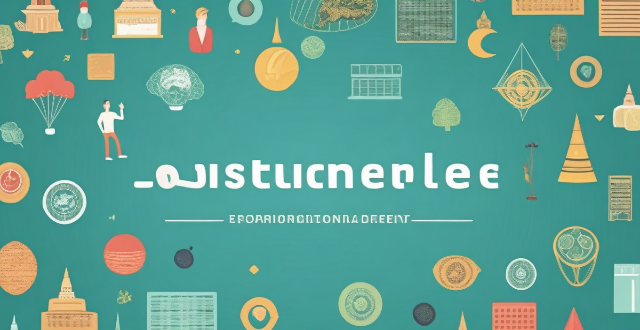
What are some successful examples of sustainable development projects ?
Successful sustainable development projects aim to meet the needs of the present without compromising future generations. Examples include the Great Green Wall for the Sahara and the Sahel Initiative, the Danish Wind Energy Revolution, Solar Power in India, Copenhagen's Bike Culture, and Renewable Energy in Costa Rica. These projects focus on balancing economic, social, and environmental considerations and demonstrate positive impacts on both the environment and society.

How does sports improve social skills ?
Sports significantly enhance social skills through teamwork, confidence-building, dealing with diversity, interpersonal development, and leadership. Participation fosters cooperation, communication, shared responsibility, achievement, resilience, public performance, acceptance, adaptability, respect, networking, empathy, conflict resolution, role assumption, motivation, and decision-making. These skills are transferable to various aspects of life, making sports a valuable platform for personal growth and social interaction.

What are some successful examples of biodiversity restoration projects ?
This article provides examples of successful biodiversity restoration projects, including the Great Green Wall Initiative in Africa, the Mau Forest Restoration Project in Kenya, the Wolong Giant Panda Reserve Expansion in China, the Coral Reef Restoration Program in the Philippines, and the Amazon Rainforest Conservation Project. These projects aim to restore degraded ecosystems through various techniques such as reforestation, reintroduction of native species, and habitat restoration, with benefits including improved livelihoods for local communities and preservation of biodiversity hotspots.
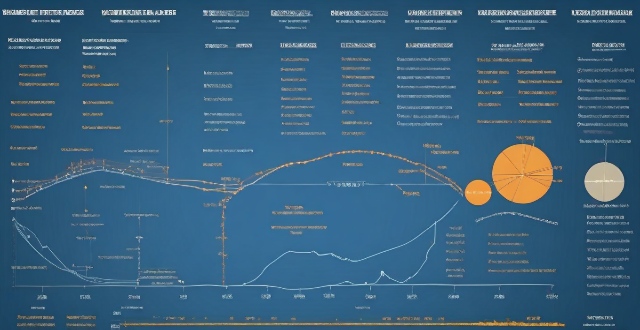
How does the European Green Deal align with global climate commitments ?
The European Green Deal, a set of policy initiativeThe European Green Deal, a set of policy initiativeing to achieve a climate- a set of policy initiatives by the EU aiming to achieve a climate-neutral economy by 2050, aligns with global climate commitments such as the Paris Agreement. It supports international climate action, promotes the circular economy, and emphasizes innovation and research to combat climate change.

In what ways can service learning projects help students develop leadership abilities ?
Service learning projects enhance leadership skills in students by promoting responsibility, encouraging teamwork and collaboration, building self-confidence, cultivating empathy and social awareness, enhancing adaptability and initiative, developing organizational skills, and providing real-world experience. These projects benefit both the community and the students, offering opportunities for personal growth and practical application of classroom theories.

What initiatives are being taken globally to include children in climate action planning ?
Including children in climate action planning is crucial for several reasons. Firstly, it acknowledges their rights and provides them with a platform to voice their concerns about the environment. Secondly, it encourages intergenerational dialogue and collaboration, which can lead to more effective solutions. Finally, involving children in climate action planning helps them develop critical thinking skills, empathy, and a sense of responsibility towards the planet. Here are some initiatives that are being taken globally to include children in climate action planning: 1. UNICEF's Child-Friendly Cities Initiative 2. The Global Kids Climate Forum 3. The Youth4Climate Movement 4. The Fridays for Future Movement 5. The Climate Change Education Programme (CCEP) 6. The Earth Guardians Programme 7. The Eco-Schools Programme 8. The Children's Climate Prize 9. The Global Youth Biodiversity Network (GYBN) 10. The Youth Environmental Leadership Programme (YELP)

What are some successful examples of public health campaigns focused on increasing physical activity levels ?
Over the last decade, public health campaigns aimed at increasing physical activity levels have emerged as a crucial strategy in the global fight against sedentary lifestyles and their associated health risks. These campaigns, often initiated by governments, non-profit organizations, or private entities, employ a variety of tactics to encourage individuals to adopt more active lifestyles. Here are some of the most successful public health campaigns that have made significant strides in promoting physical activity: 1. **Let's Move!** - Launched by Michelle Obama in 2010, this initiative aims to solve the problem of childhood obesity within a generation by encouraging daily physical activity and healthy eating habits. The campaign has successfully raised awareness about childhood obesity and inspired many communities to take action. 2. **Active Healthy Kids Canada Report Card** - This annual report card provides a comprehensive overview of physical activity levels among Canadian children and youth. By collecting and analyzing data on physical activity levels, sedentary behavior, and fitness levels, the report card has increased awareness about the importance of physical activity and provided evidence-based recommendations for policymakers and practitioners. 3. **10,000 Steps Rockhampton** - A community-wide program in Rockhampton, Queensland, Australia, this initiative aims to increase physical activity levels among residents by promoting walking as a simple and effective form of exercise. Through various initiatives such as Walk to School programs, workplace challenges, and community events, the program has led to significant increases in walking rates among participants, resulting in improvements in overall health and well-being. 4. **Vermont's Physical Activity Guidelines for Americans Campaign** - This state-wide campaign in Vermont, United States, promotes the adoption of the Physical Activity Guidelines for Americans among Vermonters. Through educational campaigns, partnerships with local organizations, and community events focusing on the benefits of regular physical activity, the campaign has improved understanding and adherence to the guidelines, contributing to higher levels of physical activity among Vermonters. 5. **Copenhagen's Cycling Strategy** - A city-wide initiative in Copenhagen, Denmark, this campaign aims to make cycling a safe, attractive, and convenient mode of transportation for all residents. By expanding bike lanes, improving cycling infrastructure, and promoting cycling culture through events and education, Copenhagen has become one of the most bicycle-friendly cities in the world, with over 62% of residents commuting by bike daily. This has led to significant improvements in air quality, traffic congestion, and public health. These campaigns demonstrate the power of targeted, creative approaches in fostering a culture of physical activity and improving public health outcomes. By leveraging the strengths of their respective communities and focusing on sustainable, long-term changes, these initiatives serve as models for future efforts to combat sedentary lifestyles and promote active living.
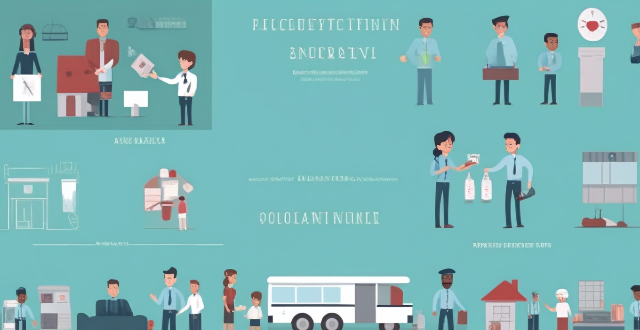
Can you provide examples of successful inclusive policies from around the world ?
Inclusive policies are designed to ensure equal opportunities for all individuals, regardless of their background or circumstances. Examples of successful inclusive policies from around the world include the Disability Rights Act in the United States, which protects the rights of individuals with disabilities; Iceland's Gender Equality Act, aimed at achieving full gender equality; India's National Rural Health Mission, a large-scale public health initiative to provide essential healthcare services to rural populations; and Canada's Affordable Housing Program, aimed at creating more affordable housing options for low-income households. These policies demonstrate the importance of addressing social inequalities and promoting inclusivity in various areas of society.

What are some examples of successful climate debt repayment programs ?
Climate debt repayment programs aim to address the disproportionate impact of climate change on vulnerable communities and countries. Successful programs include the Green Climate Fund, Global Environment Facility, World Bank's Climate Investment Funds, and African Development Bank's Africa Adaptation Initiative. These programs provide financial support and resources for adaptation, mitigation, and sustainable development projects in developing countries. Key features include funding for biodiversity conservation, land degradation prevention, private sector involvement, and disaster risk reduction.

What are some successful examples of sports-based rural revitalization programs ?
Sports-based rural revitalization programs have been successful in improving economic, social, and cultural conditions of rural areas through sports activities. Examples include China's Hometown Sports Project, India's Rural Sports Development Program, Australia's Grassroots Sports Development Program, and South Africa's Rural Sports Development Project. These programs focus on developing sports infrastructure, training talent, organizing events, and promoting community engagement, contributing to sustainable development and enhancing quality of life in rural areas.

What role does intrinsic motivation play in learning and how can I cultivate it ?
Intrinsic motivation is a key factor in enhancing the learning process. It leads to increased engagement, persistence, and deeper understanding of material. To foster this type of motivation, one should focus on promoting autonomy, competence, relatedness, personal interest, and a mastery orientation. Strategies include offering choices, providing clear feedback, building community, connecting to interests, and emphasizing the learning journey over just the outcome.